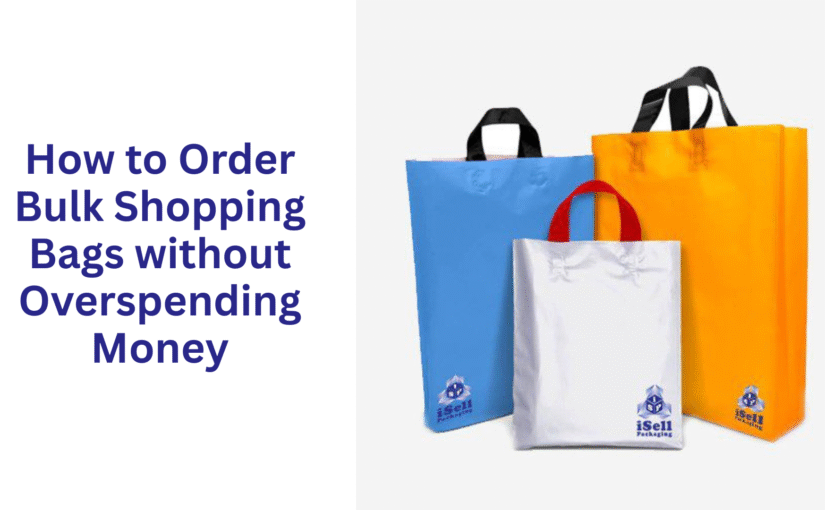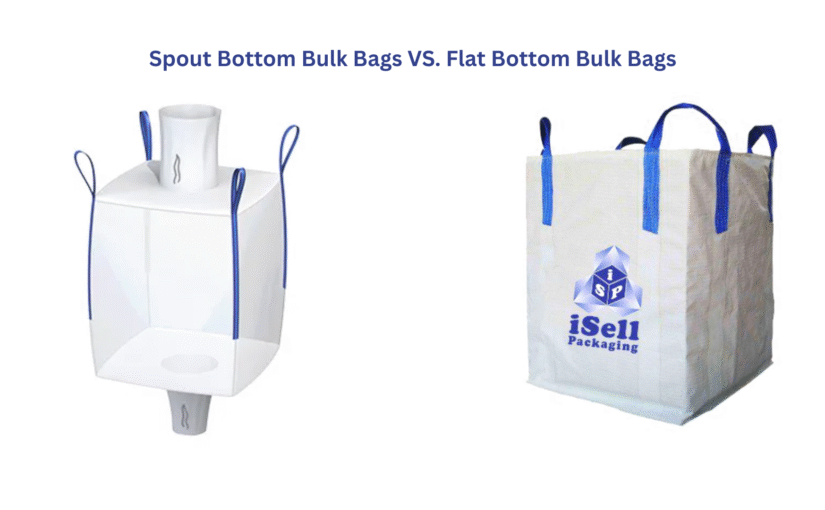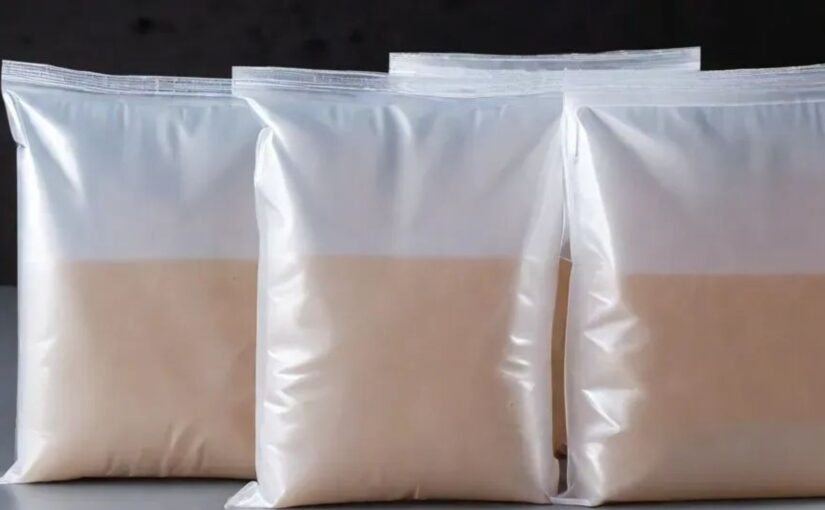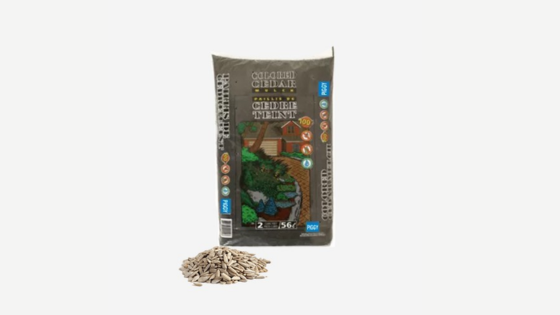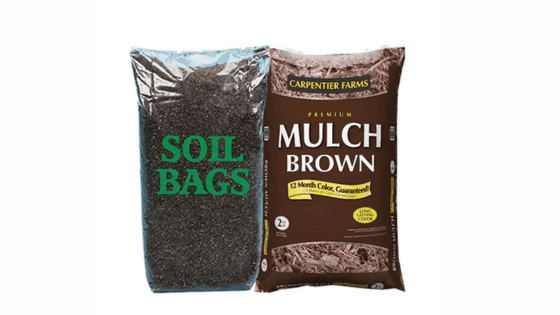For businesses—whether you’re running a retail store, an e-commerce platform, or organizing events—bulk shopping bags are more than just a practical necessity.
They’re an extension of your brand, silently showcasing your values while carrying your products. However, without a clear strategy, the cost of shopping bags bulk order can quietly eat into your profits.
The good news? You can buy shopping bags wholesale that are high-quality, brand-aligned, and budget-friendly by following a few smart steps. Let’s learn how to order shopping bags in bulk without overspending, ensuring you get the best value for your money.
Understand Your Business Needs First
Before you even start browsing for bulk shopping bag suppliers, take time to pinpoint exactly what your business requires. A clear understanding of your needs prevents overspending on unnecessary features or ordering the wrong type of bags.
Choose the Right Bag Material
The material you choose for your bulk shopping bags impacts both cost and customer perception. Here’s a breakdown of common options:
- Plastic Bags (HDPE/LDPE):
-
- HDPE (High-Density Polyethylene): These are strong, lightweight, and among the cheap bulk shopping bags available. They’re perfect for grocery stores or apparel shops.
- LDPE (Low-Density Polyethylene): Slightly softer and more flexible, these offer a premium feel at a low cost.
- Pro Tip: Opt for recycled or biodegradable plastic to align with eco-conscious customers without significantly increasing bulk shopping bags cost.
- Paper Bags:
-
- Kraft Paper: Affordable, durable, and eco-friendly, these bags have a natural, rustic look that suits many retail settings.
- Coated Paper: Ideal for luxury brands, offering a sleek, polished appearance.
- Handle Options: Twisted paper handles are typically the cheapest, while rope handles add a high-end touch but increase shopping bags’ bulk pricing.
- Reusable Bags:
-
- Non-Woven Polypropylene (NWPP): These are cost-effective, durable, and highly customizable, making them great for promotions.
- Cotton or Canvas: These biodegradable options are pricier but convey a premium, eco-friendly image.
- Jute or RPET (Recycled PET): These offer sustainability and durability, perfect for brands emphasizing green values.
Get the Size and Strength Right
Choosing the wrong size or strength can lead to wasted money or unhappy customers. Here’s how to nail it:
- Weight Capacity: Match the bag’s strength to your products. For lightweight items like clothing, you don’t need heavy-duty bags designed for 10 pounds of groceries.
- Dimensions: Oversized bags waste material, while undersized ones frustrate customers. Measure your typical products to find the right fit.
- Fillers: If you need slightly larger bags for presentation, use tissue paper or padding to fill the space without upgrading to a bigger, pricier bag.
Plan Your Order Quantity Carefully
Over-ordering ties up your cash flow, while under-ordering can lead to rush fees or stockouts. To save money on bulk bags:
- Review historical sales data to estimate monthly or quarterly needs.
- Check your storage space—bags stored in poor conditions (e.g., damp warehouses) can degrade.
- Account for supplier lead times and avoid overstocking outdated designs, especially if your branding changes frequently.
Find the Right Suppliers for Your Budget
The supplier you choose can make or break your bulk bag purchase tips. Different suppliers offer varying prices, quality, and reliability, so it’s worth exploring your options.
Online Marketplaces
These platforms are treasure troves for wholesale shopping bags. They connect you with global suppliers offering competitive shopping bags bulk pricing. However:
- Request quotes from multiple suppliers to compare costs.
- Verify supplier credentials to avoid scams or low-quality products.
- Be cautious of high Minimum Order Quantities (MOQs), which can force you to buy more than you need.
Domestic Wholesalers
Sourcing locally often means faster shipping, easier communication, and sometimes lower MOQs. While the per-unit cost may be higher than international suppliers, you could save on shipping fees and avoid delays, making it a cost-effective choice for bulk affordable shopping bags.
Specialized Packaging Companies
These suppliers cater specifically to businesses looking for bulk shopping bags. They often provide expert advice on materials, customization, and cost-saving options. They’re ideal for mid-sized businesses needing custom orders without massive MOQs.
Direct Manufacturers
For businesses with high-volume needs (e.g., tens of thousands of bags), going straight to the manufacturer can yield the best bulk shopping bags cost. However, this requires careful logistics planning:
- Account for customs, tariffs, and freight costs.
- Consider hiring a customs broker to streamline international orders.
- Ensure you have the storage and cash flow to handle large orders.
Buy Smart to Maximize Savings
Buying in bulk is just the start. To truly save money on bulk bags, you need to make strategic choices about features, customization, and negotiations.
Leverage Volume Discounts
Most bulk shopping bag suppliers have tiered pricing—the more you buy, the lower the per-unit cost. Study supplier pricing tiers and aim to order just enough to hit the next discount level without overstocking.
Simplify Customization
Custom branding is great, but it can inflate costs. To keep your shopping bags bulk order affordable:
- Go Plain: Blank bags are the cheapest option. Add branding with stickers or stamps for a low-cost, flexible solution.
- Minimal Design: Use one or two ink colors and limit the print area to reduce costs.
- Printing Methods: For large orders, screen printing is cost-effective; for smaller runs, digital printing is better.
Optimize Material Specifications
Small tweaks to material specs can lead to big savings:
- Thickness: Reducing the GSM (grams per square meter) for paper or mil thickness for plastic slightly can lower costs without sacrificing strength.
- Handles: Flat paper handles or die-cut plastic handles are cheaper than rope or reinforced options.
- Gussets: Only add side or bottom gussets if your products need extra space, as flat bags are less expensive.
Negotiate with Suppliers
Don’t accept the first quote you get. To secure discount shopping bags:
- Collect multiple quotes to strengthen your bargaining power.
- Ask about discounts, free samples, or flexible payment terms.
- Be open to alternative materials or sizes that might lower costs.
Avoid Rush Orders
Last-minute orders often come with premium production or shipping fees. Plan your bulk shopping bag purchases well in advance to avoid these costly surcharges.
Bundle Your Orders
If your business needs other packaging materials like tissue paper, boxes, or ribbons, order them alongside your bags. Many suppliers offer discounts for bundled purchases, reducing your overall bulk shopping bags cost.
Consider Sustainable Options Strategically
Eco-friendly wholesale shopping bags like RPET or biodegradable plastic often cost more upfront but can boost brand loyalty and drive repeat sales. If your target audience values sustainability, this investment can pay off in the long run.
Always Request Samples
Order physical samples to test:
- Material quality and durability.
- Print accuracy for custom designs.
- Handle strength to ensure they won’t tear under load.
This small upfront cost can save you from expensive mistakes.
Understand Total Costs
Hidden fees can turn cheap bulk shopping bags into an expensive headache. Compare quotes for domestic vs. international shipping.
So you must have understood how to order bulk shopping bags without breaking your bags. At iSell Packaging, we tick every box, from reasonable pricing, customized bags, to fast shipping, to become your reliable shopping bags vendor. Get in touch now to let us know your requirements.


